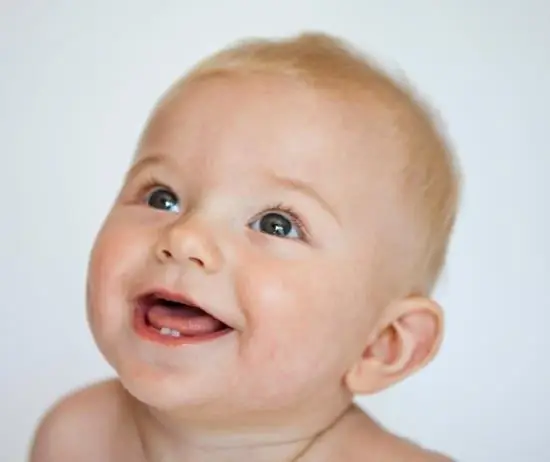- Author Horace Young [email protected].
- Public 2023-12-16 10:35.
- Last modified 2025-01-23 11:41.
Teething in children worries parents no less than the very birth of a child. Firstly, the appearance of teeth is accompanied by pain, so babies become moody and often cry. Secondly, it is one of the first reasons for pride during the development of an infant.

Instructions
Step 1
Already during the mother's pregnancy, the fetus forms seals of epithelial tissue in the place of future teeth, later they turn into tooth rudiments. The first teeth in an infant grow during the first year of life, the growth of milk teeth lasts up to three years. The timing of eruption can be different, it depends on heredity, environmental factors, nutrition, quality of drinking water and other conditions.
Step 2
Infants usually get their first teeth at six months of age, but in some babies this period may occur earlier, shortly after three months, or later, for example, by one year. There are no strict rules governing when children should have their first teeth, since all organisms develop in different ways. You can be worried about the absence of a child's first tooth only after he is one year old - in this case, consult a doctor. Remember that this does not affect the child's mental development in any way. The opinion that a delay in the appearance of teeth is necessarily associated with rickets is a myth, but a violation of the timing may indicate some diseases.
Step 3
As a rule, in children, teeth are cut in pairs. The first to appear are the central lower incisors - the teeth on the lower jaw, which are designed to bite off food and are located in the middle. The approximate time for the appearance of these teeth is six to nine months. Teeth usually appear later in boys than in girls.
Step 4
Later, the central incisors on the upper jaw begin to form, followed by the lateral upper incisors and the lateral lower incisors. By this time, a small person is usually already a year old, but if a one-year-old baby has less than eight teeth, this does not mean deviations.
Step 5
The next six months, molars erupt on both jaws, and only after one and a half years canine teeth appear. In total, the child grows twenty milk teeth, which by the age of seven begin to be replaced by permanent ones.






